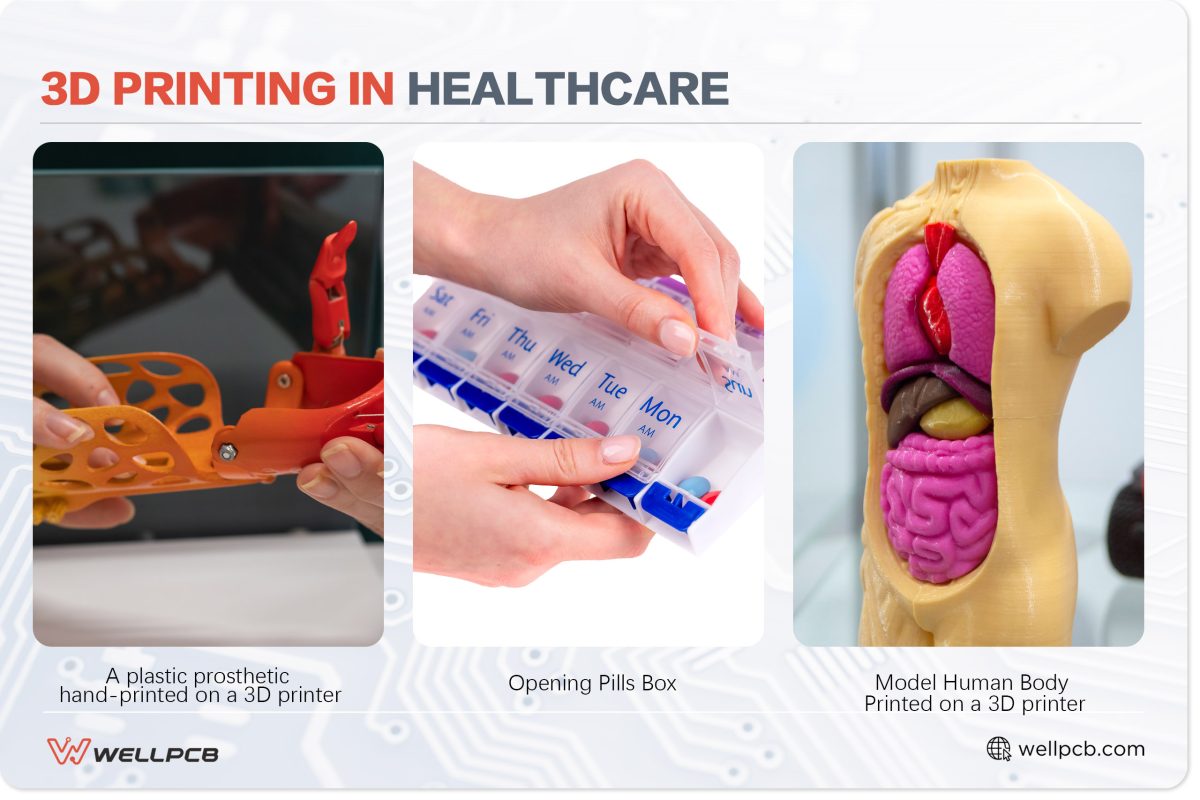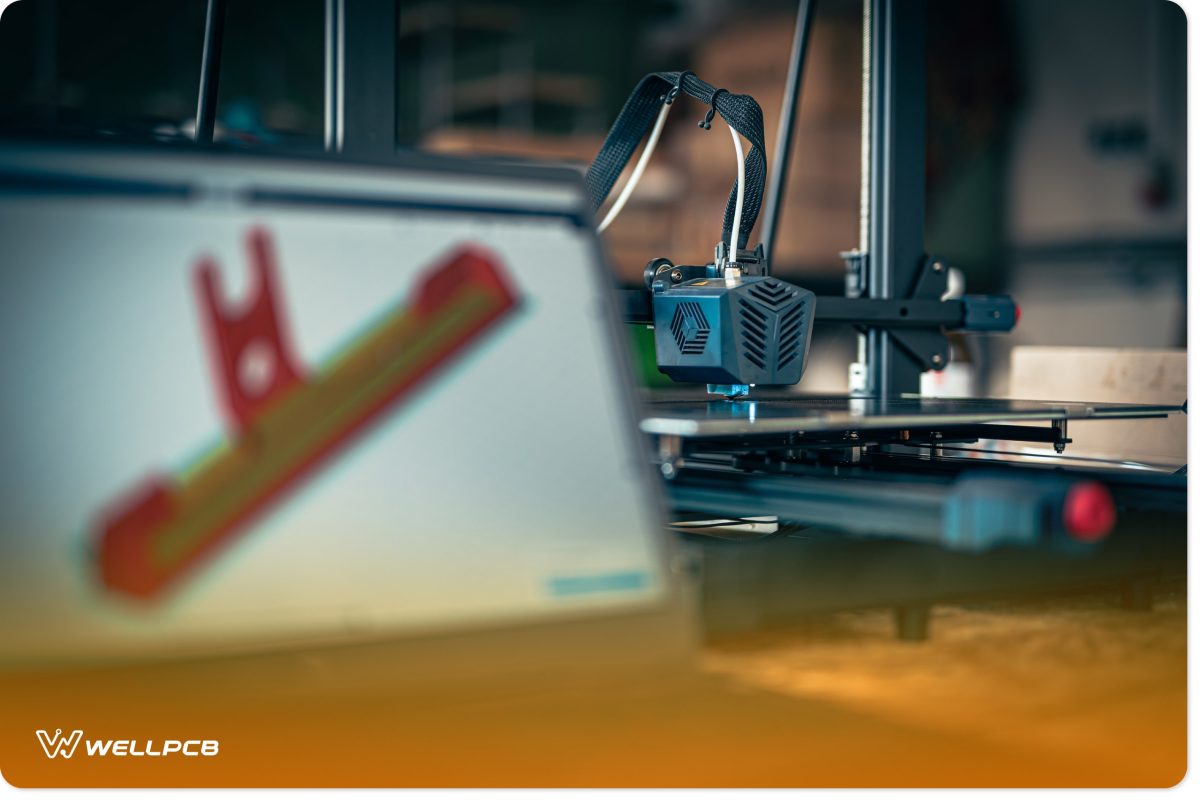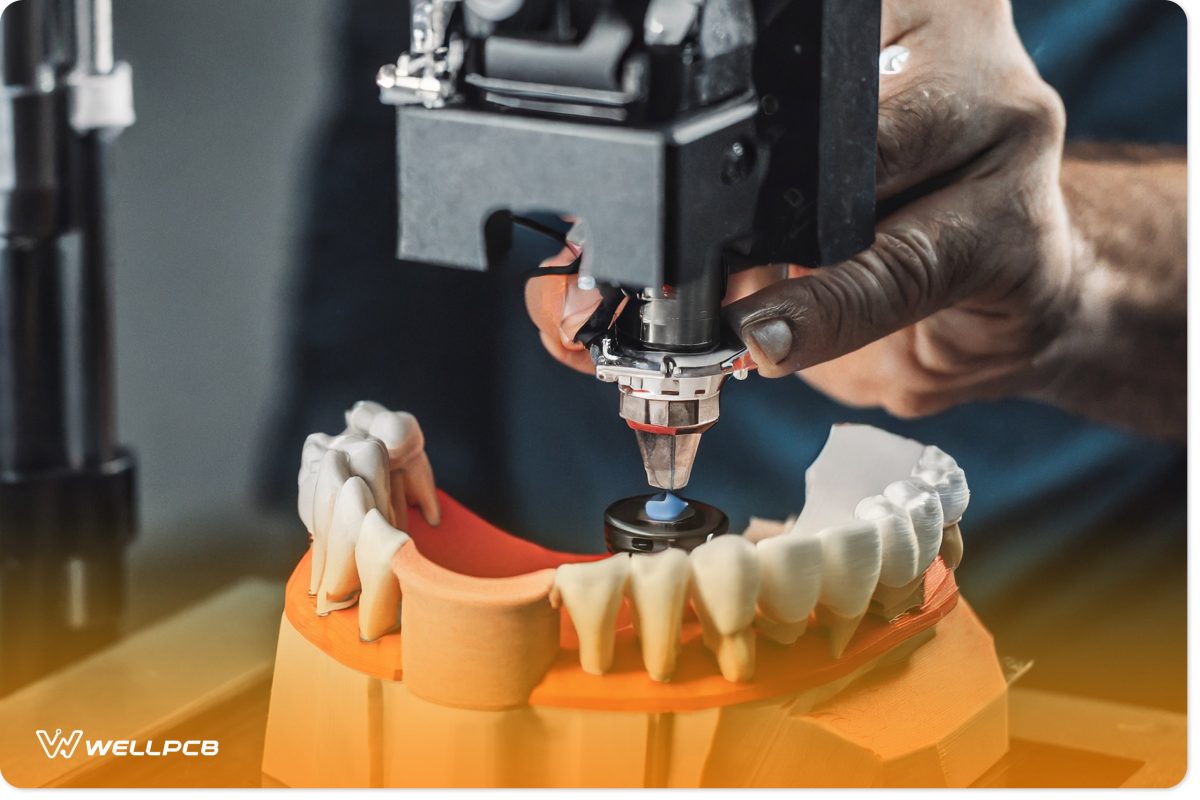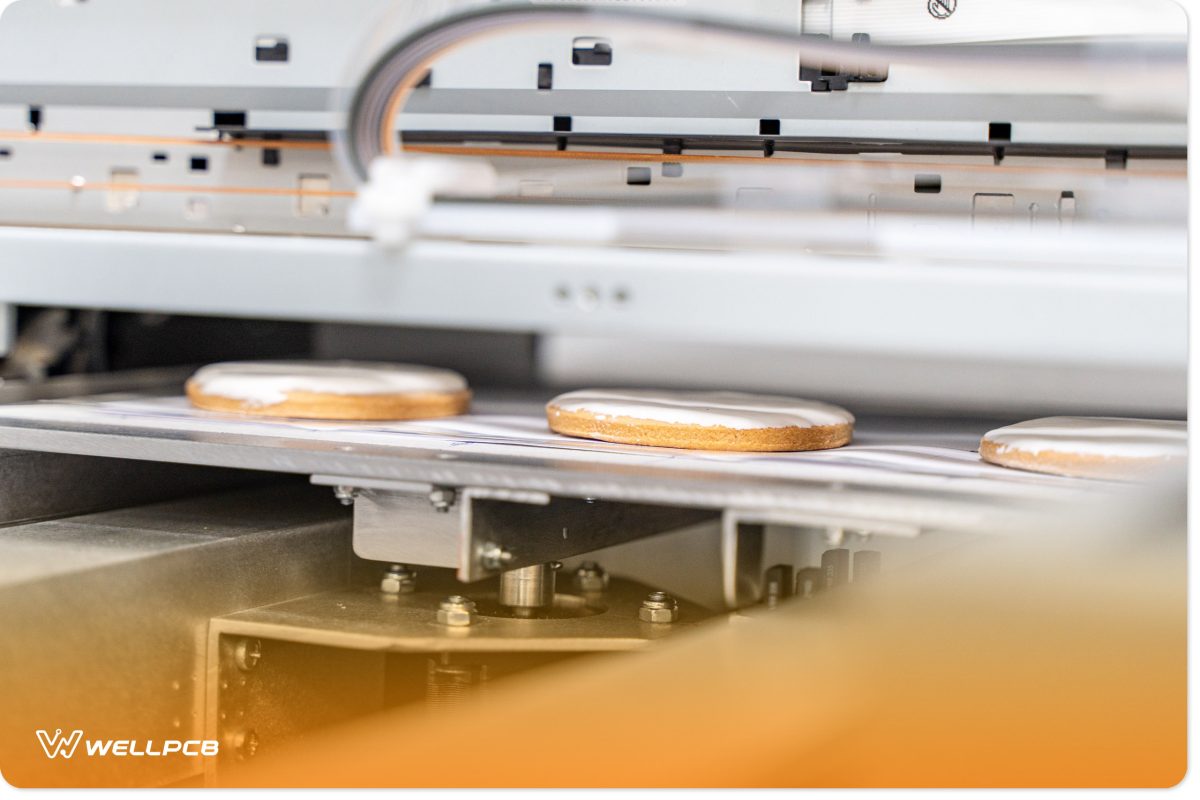Contents
- 1 How 3D Printing Revolutionizes Patient Care and Medical Devices in Healthcare
- 2 How 3D Printing Accelerates Innovation and Customization in the Automotive Industry
- 3 How 3D Printing Enhances Precision and Reduces Weight in Aerospace
- 4 How 3D Printing is Shaping the Future of Construction
- 5 How 3D Printing Drives Efficiency and Customization in Manufacturing
- 6 How 3D Printing Enables Personalization and On-Demand Production of Consumer Products
- 7 How 3D Printing Empowers the Next Generation of Innovators in Education
- 8 How 3D Printing Enhances Precision and Customization in the Dental Industry
- 9 How 3D Printing Redefines Creativity and Sustainability in Fashion
- 10 How 3D Printing Inspires Culinary Innovation in the Food Industry
- 11 Conclusion
How 3D Printing Revolutionizes Patient Care and Medical Devices in Healthcare

The healthcare sector faces considerable challenges, from rising costs and inadequate access to workforce shortages and a rise in chronic illnesses. Introducing 3D printing to healthcare has alleviated some of these pressures, largely through its unique ability to create highly customized structures—a key advantage in medical applications.
3D Printing for Medical Prostheses
Orthotists and prosthetists can use 3D printing to create prosthetic devices tailored to the specific anatomy of their patients. This makes the devices more comfortable, reduces complications, and improves overall functionality.
For example, prosthetic limbs can be designed and crafted to fit the bone and tissue structure of the area where a limb has been amputated. The better the fit, the easier it is for patients to acclimate themselves to their new prosthetic devices, facilitating smoother recovery and rehabilitation.
Using 3D Printing in Healthcare for Personalized Medicine
Patients with chronic illnesses often require multiple daily medications and rely on devices like pill organizers to manage their schedules. These devices can be expensive or have limited options that don’t meet everyone’s needs.
For instance, standard pill organizers usually come with three sections (morning, afternoon, and evening). Patients who take medication more than three times a day—and thus require more sections—may need to purchase an additional pill organizer.
With desktop 3D printing, patients can design custom pill organizers and dispensers tailored to their specific needs and schedules.
3D Printing in Surgical Planning and Education
3D-printed models have become invaluable for surgical planning, similar to X-rays and other diagnostic visualizations.
These models can be printed onsite in a matter of hours, giving surgeons precise, one-to-one anatomical maps to study in preparation for surgery. By clearly illustrating injuries or illnesses, the models also enhance communication between doctors, patients, and their families.
Access to such detailed representations not only improves surgical outcomes but can also reduce operation times.
Additionally, hospitals and medical schools use these models for hands-on training with new doctors and nurses.
3D Printing Biomedical Engineering
Biomedical engineering has contributed to life-saving devices like ECGs, monitors, and stethoscopes, yet developing and producing this equipment is costly.
Through its ability to facilitate rapid prototyping, additive manufacturing can make designing and manufacturing medical devices significantly faster and more affordable.
The technology also aids in fabricating parts like printed circuit boards (PCBs), essential to these devices.
3D printing can also improve the speed of maintenance and repair of medical equipment. For instance, technicians can 3D print temporary parts for quick repairs, minimizing equipment downtime.
How 3D Printing Accelerates Innovation and Customization in the Automotive Industry
The automotive industry is undergoing significant transformation through 3D printing, especially with recent advances in additive manufacturing techniques like fused deposition modeling (FDM) and material jetting.
These technologies allow vehicle manufacturers to produce complex metallic structures, opening up new possibilities for part production and customization.
3D Printing in The Production of Automotive Parts
The global car modification and tuning market is valued at over $58 billion, with high demand for custom parts and modifications. Car manufacturers can use 3D printing to create everything from simple custom visors and side mirrors to larger parts like fenders, spoilers, and bumpers. For older, rare vehicles that are no longer in production, mechanics can use additive manufacturing to fabricate discontinued parts on demand.
3D printing also addresses inventory challenges for auto service centers, which typically have limited storage space and often rely on external suppliers for parts. Through on-demand fabrication, these centers can reduce customer wait times and streamline repairs, especially when hard-to-find components are needed.
Over the last few years, companies like Ford have leveraged 3D printing to support their push towards electric vehicles, using additive manufacturing to produce functional, lightweight vehicle parts that enhance vehicle performance and fuel efficiency.
3D Printing in Automotive Equipment and Tools
Mechanics and technicians depend on specialized tools and assistive equipment such as molds, fixtures, and jigs.
3D printing allows them to fabricate these tools—either entirely or in parts—customized for specific jobs.
This customization is particularly valuable for custom installations that require unique equipment, ultimately leading to faster, more efficient repairs and modifications.
The BMW Group is a great example of this approach, using additive manufacturing to produce highly specialized robot grippers for its assembly lines.
The company also operates an entire campus dedicated to additive manufacturing research and development.

Additive Printing for Automotive Electronic Equipment
With the rise of electric and self-driving cars, modern vehicles are increasingly computerized—even traditional petrol-powered vehicles now feature intricate electronic systems.
As with most electronic systems, these systems are connected through a network of PCBs. Specifically, car makers use flexible printed circuit boards to fit electronics into the tight, compact spaces of their vehicles.
Without proper design and prototyping, the electronic systems of the vehicles would not exist or, at the very least, they wouldn’t work as effectively.
3D printing enables rapid prototyping, accelerating the iterative process of design improvements and significantly reducing development time—empowering automakers to bring new models to market faster.
How 3D Printing Enhances Precision and Reduces Weight in Aerospace
NASA, a pioneer in aerospace innovation, has embraced 3D printing to optimize spacecraft efficiency. This technology enables the creation of complex, lightweight designs that traditional manufacturing often struggles to achieve.
Complex Custom Designs
When it comes to complex designs, traditional aerospace manufacturing has struggled to keep pace with 3D printing technology. Specifically, 3D printing’s unique capacity to produce intricate geometric structures has enabled the aerospace sector to create lighter, more efficient aircraft.
The Future of 3D-Printed Rockets
In early 2023, NASA launched its first fully 3D-printed rocket, crafted from a specialized alloy. These rockets are lighter, faster to produce, and more fuel-efficient than traditional models.
While passenger spacecraft have yet to adopt this technology, 3D-printed rockets are proving invaluable for satellite launches.
This is especially the case for Low-Earth Orbit (LEO) satellite network companies like Starlink and Amazon’s Project Kuiper, both of which launch new satellites regularly.
3D-printing technology makes this rapid deployment of satellites considerably faster and easier.
How 3D Printing is Shaping the Future of Construction
Architects and civil engineers can produce 3D models of their designs on demand. These live 3D models are easier to view, amend, and showcase to builders. Nevertheless, 3D printing’s potential in construction extends far beyond models.
Construction firms can use additive manufacturing to construct entire buildings. Industrial 3D printers can use polymers and other composite materials to fabricate structural components such as walls and beams.
With mobile 3D printers, these structures can be printed on-site, eliminating the need to transport bulky materials and reducing overall construction costs. 3D printers can also generate custom tools and aids, ensuring workers are always well-equipped.
By strategically implementing 3D printing, the construction industry reduces material waste, enables rapid prototyping, and supports more sustainable building practices.
How 3D Printing Drives Efficiency and Customization in Manufacturing
As discussed in earlier sections, 3D printing has become indispensable for prototyping. By leveraging additive printing’s ability to print entire structures whole, designers can produce complex shapes rapidly and in fewer iterations.
This not only speeds up development, but also minimizes waste—contributing to more sustainable production processes at scale.

How 3D Printing Enables Personalization and On-Demand Production of Consumer Products
Consumer product designers often create items with broad appeal for mass production. Yet, individual needs vary, and many customers seek products tailored to their specific requirements.
Enhancing Accessibility with Personalized Designs
For example, consider Sony’s Access Controller for the PlayStation 5. While it provided an innovative solution for gamers with disabilities, it was substantially more expensive than the standard controller.
Gamers with disabilities now often use desktop 3D printers to generate rigs, aids, and other contraptions to make it easier for them to play games—competitively and recreationally.
However, these homemade structures typically lack durability due to the natural limitations of desktop 3D printers.
With industrial-grade 3D printing, gaming companies can produce sturdier, customized devices for people with disabilities.
This isn’t limited to gaming either, as 3D printers can facilitate more accessible versions of all kinds of devices, including phones, remote controllers, and peripherals.

3D printing also enables custom sizing for jewelry, clothes, and other products, improving fit, reducing waste, and enhancing customer satisfaction.
How 3D Printing Empowers the Next Generation of Innovators in Education
While traditional “learning styles” are now considered a myth, 3D printing can still support certain learners and educators with physical models that cater to kinesthetic and visual experiences.
These models can be generated on-demand to meet the specific needs of learners or lessons.
3D printing can also make education more dynamic, allowing teachers to encourage a hands-on approach to learning with tactile examples.
Students can use 3D printers to design and generate their own projects, fostering collaboration and creativity.
In engineering classes, for instance, students can print custom breadboards and other components.
3D printing technology can ultimately help educators deliver a more personalized and engaging learning experience.
How 3D Printing Enhances Precision and Customization in the Dental Industry
3D printing is transforming the dental industry, with practitioners increasingly using additive manufacturing to improve patient outcomes.
For instance, dentists can create highly accurate, personalized dental implants, crowns, and bridges that fit precisely and last longer. This customization not only improves patient comfort and satisfaction but also enhances the effectiveness of treatments.
Dentists and dental surgeons can also use 3D-printed models to better understand each patient’s anatomy before performing procedures.
By studying these models, practitioners can plan their approach in advance, reducing mistakes, patient discomfort, and treatment time.
Other dental devices like orthodontic aligners and dentures can be crafted to exact specifications, improving both functionality and aesthetics.

Image 3D Conversion (I3DC) is a digital dentistry imaging service provider that specializes in helping dentists and doctors plan their operations.
They primarily carry out their services using CAD/CAM software to produce digital models. Their capabilities include creating digital dentures, radiology reports, detailed aligners, and guided surgery plans.
Through additive manufacturing, they also fabricate dental inserts and pins, as well as orthodontic tools, allowing for highly accurate, patient-specific solutions.
How 3D Printing Redefines Creativity and Sustainability in Fashion
3D printing has the power to reshape the fashion industry by using materials more efficiently and reducing waste. Designers and fashion houses can use additive manufacturing to produce garments, accessories, and footwear in ways that are more sustainable and innovative.
Sports and fashion brand Adidas is a good example of this. The company has invested in additive manufacturing to create performance-oriented gear for athletes.
Its 4DWD sneakers feature 3D-printed midsoles, which provide enhanced comfort and performance while using fewer materials, resulting in a more sustainable product.
The adaptability of 3D printing enables designers to experiment with intricate patterns and complex designs that would be difficult or impossible to achieve through traditional methods.
Through additive manufacturing, the fashion industry is opening doors to new creative possibilities while advancing sustainability and empowering designers with state-of-the-art tools.
How 3D Printing Inspires Culinary Innovation in the Food Industry
While 3D printing is often associated with inedible materials, it’s also being explored in food production. Extensive research into 3D-printed meat from stem cells promises a sustainable alternative to traditional animal farming, potentially addressing food insecurity and reducing environmental impact.
In the world of culinary arts, 3D printing offers new tools for creativity.
Cake decorators, for instance, can use 3D printing to craft intricate garnishes, edible accessories, and other edible structures.

Food Ink, a futuristic gourmet pop-up restaurant, uses 3D printers to create nearly every aspect of the dining experience—including the food, furniture, and utensils. This boundary-pushing concept highlights the transformative potential of 3D printing in how we create and experience food.
Conclusion
3D printing is set to improve countless aspects of modern life. With many industries already benefiting from its capabilities—from healthcare and aerospace to fashion and food—its impact will only become more apparent.
And as the technology continues to evolve, it’s clear that 3D printing will drive innovation across even more fields in the future.
If you’re interested in exploring how 3D printing can enhance your next PCB project, contact WellPCB today! Adopting this technology early can give you a competitive edge and unlock exciting new possibilities.






